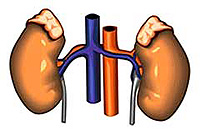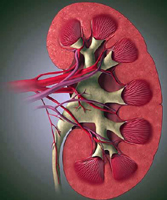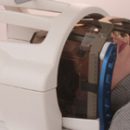What is the valves of the urethra? Where they are? How diagnosed and treated? Read in this article.
Content
Valves of the urethra (urethra)
Valves of the urethra (urethra) – Congenital mucosa folds that prevent the free emptying of the bladder. The impaired emptying of the bladder over time leads to a violation of the emptying of the ureters (megaurether, hydrometeronephrosis) or urine cast from the bladder into ureters (bubble-ureteral reflux), which in turn causes the development of chronic urinary tract infection, the inflammation of the renal tissue ( pyelonephritis), nephrosclerosis (replacement of normal renal tissue scans) and oppression of kidney function.
The valves of the ureas canal have been manifested by difficult or intermittent urinate sluggish streams.
Urethra valve diagnostics methods
 The main methods of the diagnosis of urethra valves are cystography, determination of urination rate (wrophlorometry) and urethroscopy (inspection of the urethra with
The main methods of the diagnosis of urethra valves are cystography, determination of urination rate (wrophlorometry) and urethroscopy (inspection of the urethra with
Special device urethroscope and carrying out
Medical manipulations).
The first two methods allow only to suspect the presence of a congenital valve to reduce the stream of urine flow and expand the urethra over an obstacle during urination.
The fact is that there are a series of urination disorders of a functional nature that have similar clinical and radiological picture and complications. They are due to increased muscle tone, «Responding» For keeping urine.
Urethroscopy has crucial importance in the diagnosis of valves. Since the valves of the urethra are relatively rare, in ordinary hospitals that do not have greater experience of endoscopic surgery, often diagnostic errors, entailing incorrect from the technical or tactical point of view.
Treatment of the valves of the urethra
The optimal method of treating the valves of the urethra today is endoscopic operations. Methods such as «Open» (surgical) excision valve, valve destruction «Special» catheters, are unsafe anachronism. The dumping channel is meaningless, which is understandable from the pathology name (the valve disrupts the outflow from the bladder, when his sash is spread, while the vehicles and catheters entering the bladder are free, pressing the valve flaps to the walls of the urethra).
Endoscopic treatment of the valves of the urethra
Operation is performed during urethroscopy, under short-term inhalation (mask) or intravenous anesthesia. Modern children's resectoscopes are used (special design cystoscopes). The duration of intervention is an average of 10-15 minutes. For 1-3 days, the catheter is installed. As a rule, 2-4 hours after exiting anesthesia, the patient's condition is fully normalized. After 3-5 days, children are discharged under outpatient surveillance. Before discharge, antibacterial prophylaxis of pyelonephritis is carried out.
The control examination is carried out in the RDKB after 6 months. The effectiveness of the endoscopic treatment of the valves of the urethra is close to absolute.









